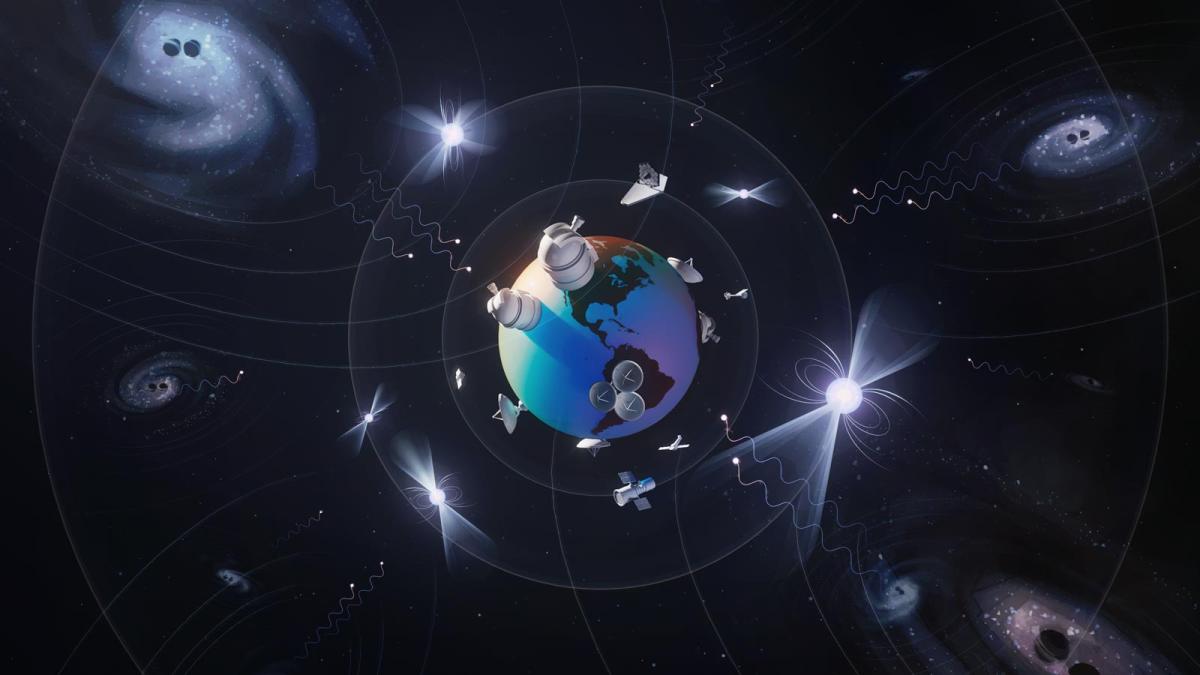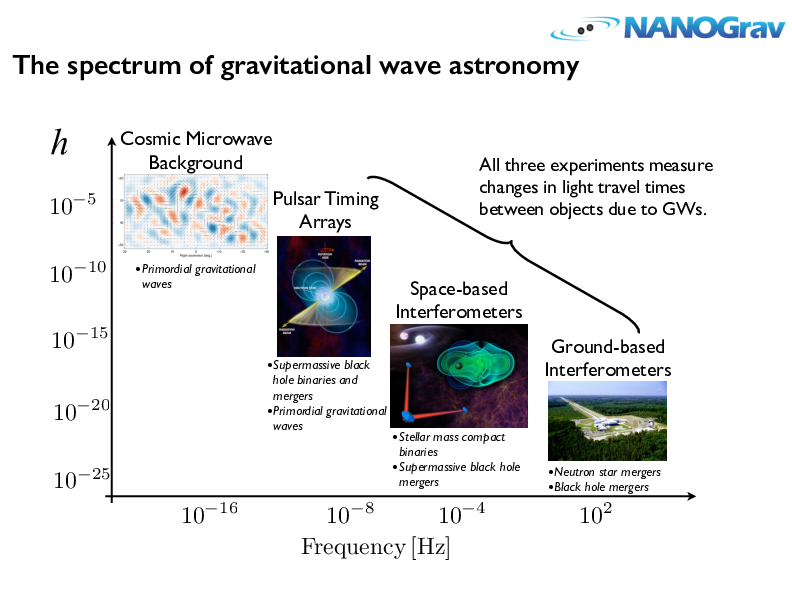
The supermassive black hole binaries at the cores of galaxies produce electromagnetic waves at radio to gamma-ray wavelengths that can be detected by telescopes on Earth and in space. They also produce gravitational waves that can be studied through their effects on an array of radio pulsars. These dual electromagnetic and gravitational wave messengers provide extremely valuable insights that cannot be gleaned from either type of observation alone. Illustration: Olena Shmahalo
This first detection of an object in both light and gravitational waves is a remarkable feat and demonstrates the unique power of uniting these two methods to explore our Universe.
This dawning era of gravitational wave astronomy and the open availability of sensitive ground- and space-based telescopes put humanity in a position to perform “multi-messenger” astronomy for the first time. This refers to our ability to receive information from several entirely different means: in this case, information from the neutron star masses, and from the subsequent light that arose from material around them. In the future, NANOGrav will contribute to this era by opening our eyes to nanoHertz frequency gravitational waves through timing of neutron stars themselves, and revealing the largest supermassive black hole binaries in our Universe. We look forward to joining the multi-messenger era by finding the intense emission that can occur from plasma that is both surrounding and being consumed by our binary systems. Through multi-messenger studies, NANOGrav will directly measure supermassive black hole masses and explore the dynamics of galaxy cores, active nucleus ignition, and plasma emission processes in the presence of extreme gravity.
About NANOGrav: LIGO and NANOGrav are complementary efforts covering different regions of the gravitational-wave spectrum. Pulsar timing arrays like NANOGrav are sensitive to gravitational waves with periods of years, while LIGO is sensitive to waves with periods near one-hundredth of a second or less. Pulsar timing arrays are on track to detect long-period gravitational waves by measuring their effects on the light-travel times of pulses from rotating neutron stars (pulsars). NANOGrav monitors a set of pulsars that together form a Galactic scale gravitational-wave observatory. Our detector will be used to study supermassive black hole binaries in order to understand the morphology, kinematics, gas content, and feedback mechanisms of galaxies. Pulsars can also be used to detect gravitational waves from topological defects in space-time called cosmic strings, which are predicted by some high energy physics models.

NANOGrav congratulates our LIGO colleagues and their collaborators across the electromagnetic spectrum on another milestone of modern astronomy: the first detection of a merger of two neutron stars.